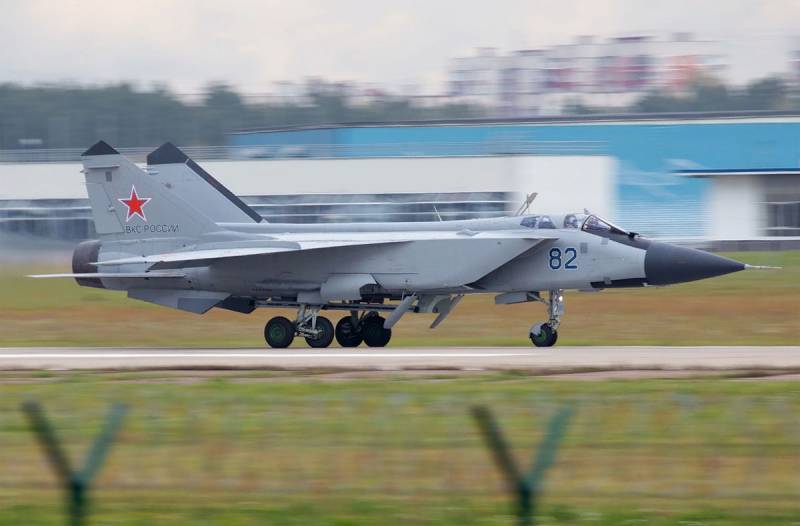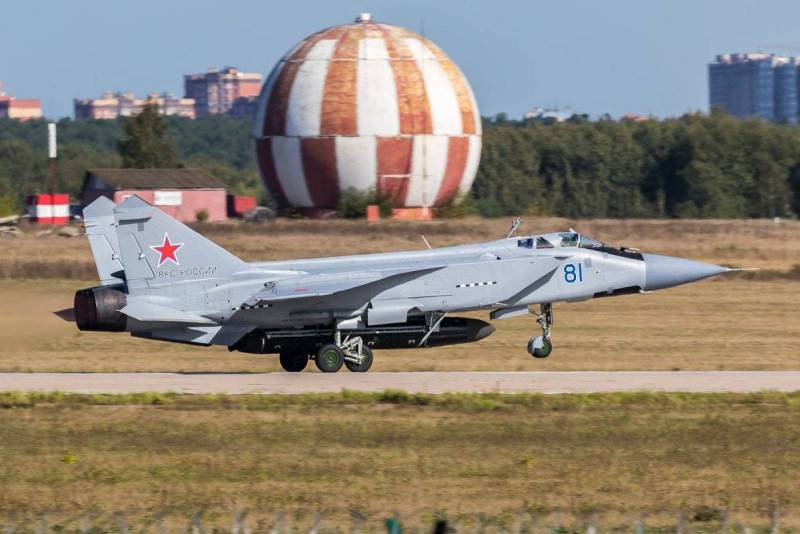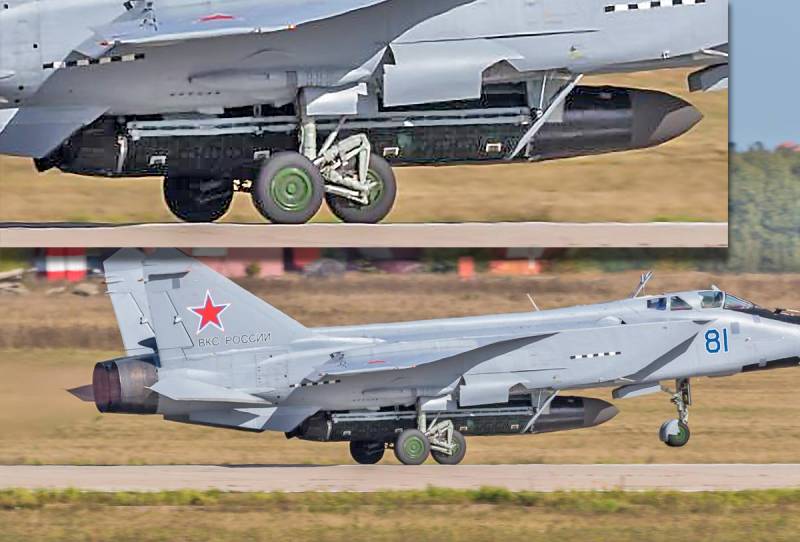The network has a photo of the second MiG-31D under the "anti-satellite missile"
This element is identical to the one that was previously used during flight tests of the MiG-31 with tail number 81. These are modifications of the MiG-31D. The car was tested in Zhukovsky. The missile is presumably a development of an anti-satellite aviation complex, the development of which was started back in the Soviet Union. We are talking about the development within the framework of the 30P6 "Contact" project. Its basis was the 79M6 "Contact" rocket with the function of a kinetic interceptor for artificial earth satellites. In the USSR, two MiG-31D boards with numbers 071 and 072 were allocated for testing. Both made their first test flights as anti-satellite aviation complexes in 1987.
It is important to note: in 2009, the then commander of the Russian Aerospace Forces, Alexander Zelin, said that the anti-satellite system in Russia was being reanimated.
Previously, the MiG-31D was launched into the air with a missile, which experts designated as anti-satellite.
That information caused a real commotion in the camp of the "partners", who immediately declared that the Russian Federation was "targeting the satellites of NATO countries."
However, it is worth adding that the question of the fact that high-altitude MiG-31 can also be modified to put certain spacecraft into orbit was also previously considered.
There is no “anti-satellite missile” in the latest photograph, but, as already noted, the MiG-31D is located at the airport with the same suspension used in the tests on board the 81. Therefore, we can assume that tests of promising weapons continue using the second MiG-31D.
There are currently no comments from officials on this issue.



Information